Lenovo ThinkSystem ST550 Tower Server Performance
For this exercise, we are using our legacy Linux-Bench scripts which help us see cross-platform “least common denominator” results we have been using for years as well as several results from our updated Linux-Bench2 scripts. At this point, our benchmarking sessions take days to run and we are generating well over a thousand data points.
We are going to show off a few results, and highlight a number of interesting data points in this article.
Python Linux 4.4.2 Kernel Compile Benchmark
This is one of the most requested benchmarks for STH over the past few years. The task was simple, we have a standard configuration file, the Linux 4.4.2 kernel from kernel.org, and make the standard auto-generated configuration utilizing every thread in the system. We are expressing results as compiles per hour to make the results easier to read.
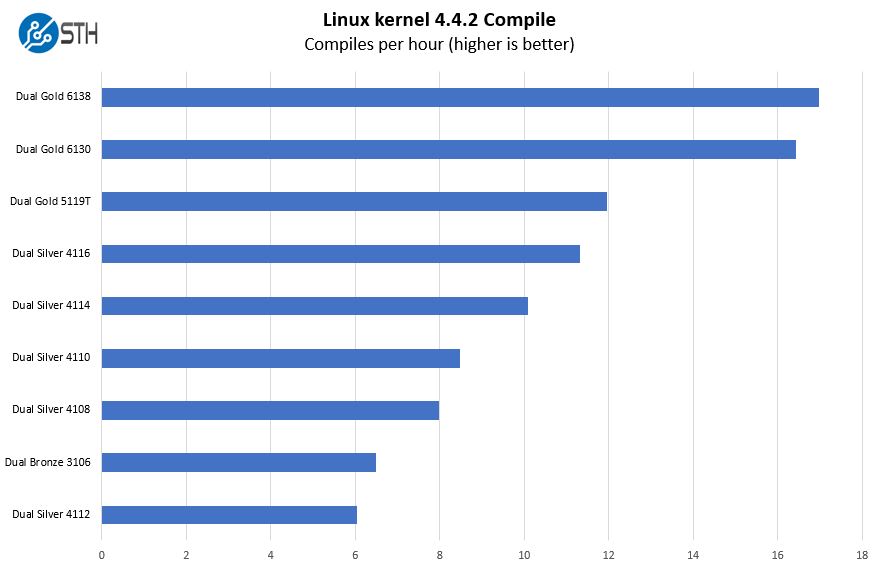
We wanted to show a range of results from the Intel Xeon Bronze to the Intel Xeon Gold range so that our readers can get some sense regarding the performance they get moving to higher-level SKUs. Here we see significant scaling of around 3x from lower-end CPUs to the higher-end variants.
c-ray 1.1 Performance
We have been using c-ray for our performance testing for years now. It is a ray tracing benchmark that is extremely popular to show differences in processors under multi-threaded workloads. We are going to use our new Linux-Bench2 8K render to show differences.
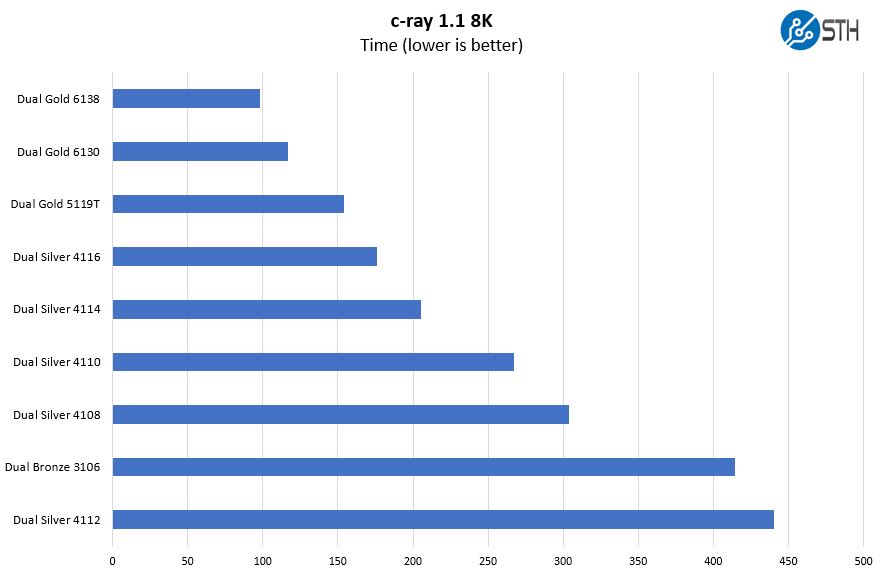
One item you may notice here is that the Intel Xeon Bronze 3106 sometimes will be slightly faster than the dual Intel Xeon Silver 4112 configuration. That is because the Bronze CPUs lack Hyper-Threading but have more physical cores. Intel’s numbering scheme is not linear with performance in all cases.
7-zip Compression Performance
7-zip is a widely used compression/ decompression program that works cross-platform. We started using the program during our early days with Windows testing. It is now part of Linux-Bench.
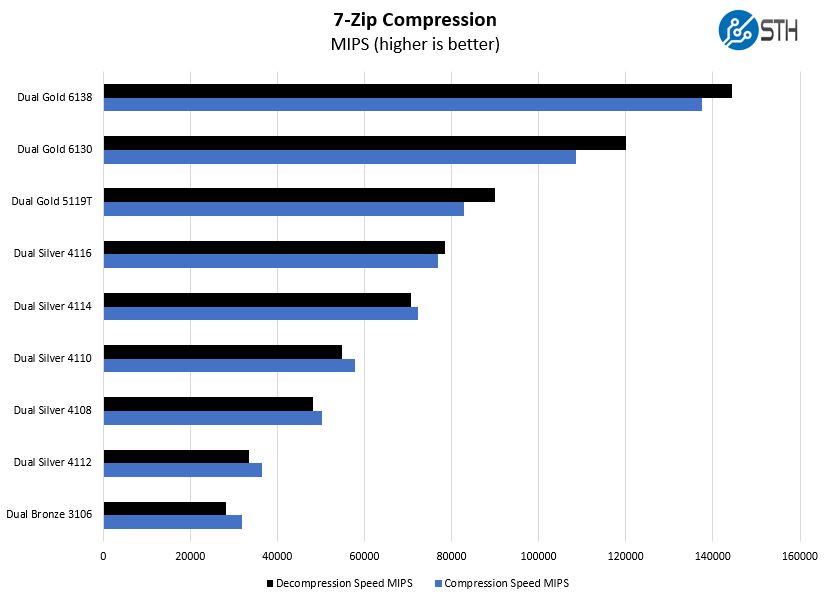
Here we can see the Intel Xeon Gold 6138 perform very well. With 20 power-efficient cores, that CPU is a great choice in the Lenovo ThinkSystem ST550.
OpenSSL Performance
OpenSSL is widely used to secure communications between servers. This is an important protocol in many server stacks. We first look at our sign tests:
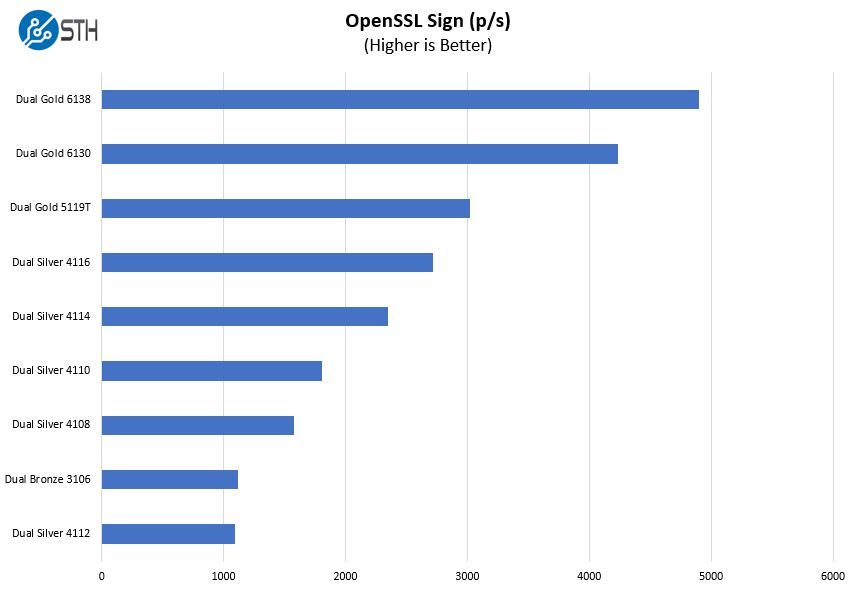
Here are the verify results:
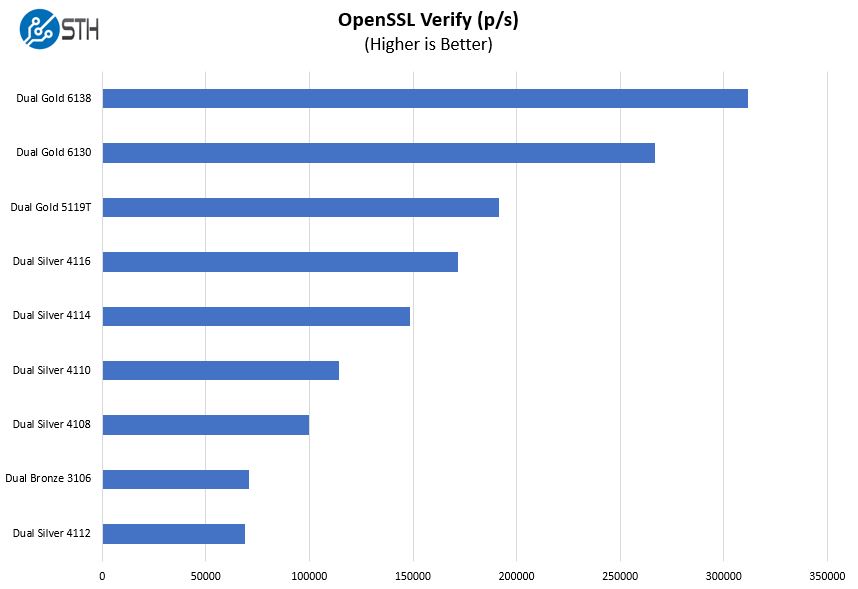
As one can see, this is another test where performance scales well with cores and clock speeds. We wanted to point out here that the upgrade from dual Intel Xeon Bronze 3106 to dual Intel Xeon 4108 or dual Intel Xeon 4110 CPUs is generally 5-10% addition to the total system cost. At the same time, one can get 40-80% more performance by getting the higher-end SKUs.
Chess Benchmarking
Chess is an interesting use case since it has almost unlimited complexity. Over the years, we have received requests to bring back chess benchmarking. We have been profiling systems and are ready to start sharing results:
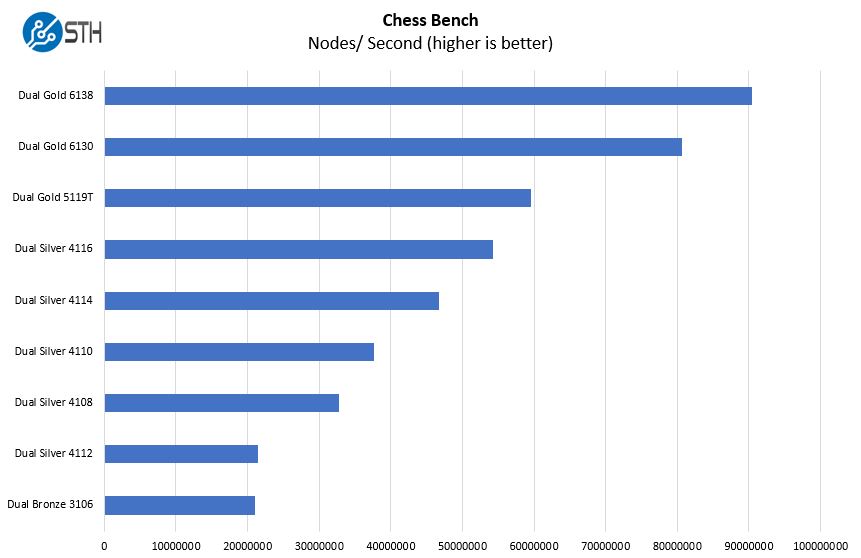
Here we see a solid scaling throughout the SKU stack. There are more CPU options in the Lenovo ThinkSystem ST550, but this is a solid look at the deltas between the chips. Lenovo offers SKUs like the Intel Xeon Silver 4116 and Silver 4116T. The “T” in the first generation of Intel Xeon Scalable processors stands for extended temperature ranges. We tested T series Intel Xeon Scalable to see if there is a performance impact and found it was negligible if any at standard temperature ranges. Given that, we have about 13 of the 26 dual socket SKUs Lenovo offers in this server covered in this chart if one is willing to append the “T” to some of the results.
GROMACS STH Small AVX2 Enabled
We have a small GROMACS molecule simulation we previewed in the first AMD EPYC 7601 Linux benchmarks piece. In Linux-Bench2 we are using a “small” test for single and dual socket capable machines. Our GROMACS test will use the AVX-512 and AVX2 extensions if available.
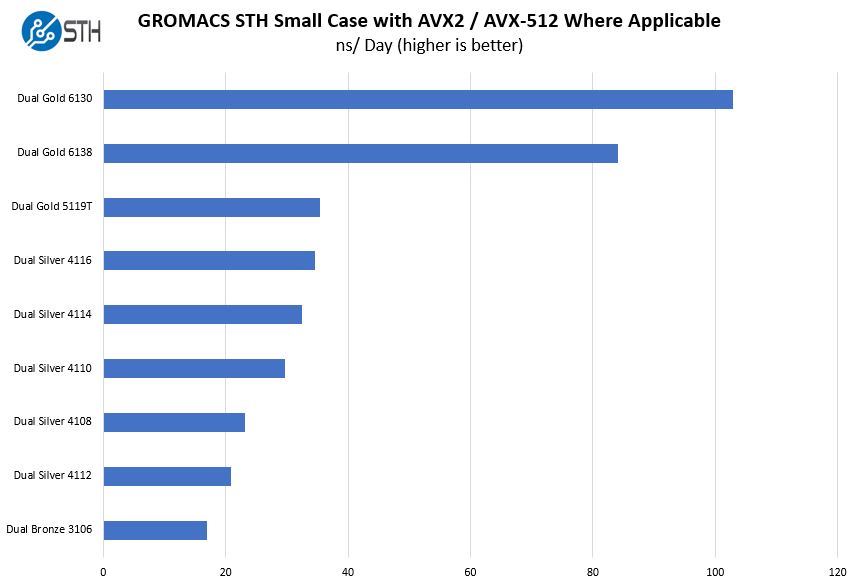
AVX-512 is an Intel extension brought from supercomputers to mainstream CPUs. Higher end Intel Xeon Gold 6100 and Platinum SKUs have dual port FMA AVX-512. You can see the impact here as the Intel Xeon Gold 6130 and Xeon Gold 6138 share a commanding lead over the Intel Xeon Gold 5119T. That is the impact of the higher-end AVX-512 implementation. If your application relies on AVX-512, get Intel Xeon Gold 6100 or higher CPUs.
In the last part of our review, we are going to share our STH Server Spider for the Lenovo ThinkStation ST550 as well as our final thoughts on the platform.




Do you have any idle/load power usage figures for the server?
Handsome looking case and typical for the ThinkSystem, the IBM tradition of always being professional upon first impression, continuing under Lenovo, unlike the lack of identity continuity projected with less traditional mindset, style de jure, Dell and HP.
As for the hardware, it would be nice to see the inside of the case to examine if the same level of attention to detail that is being applied to case form is being equally applied to chassis function, e.g. thermal and harness management… along with how peripheral boards are secured, to easy of extraction and cleaning.
Since none of the hot swap bays can be rotated 90 degrees and not a common case feature, this Lenovo computer case, irrespective of configuration would not be my first choice for any highly populated vertical (upright) application since all the drives would be situated in a less optimum, horizontal arrangement.
If I were to configure such server for horizontal (rack mount) use would provide and not shown, 1 slim DVD along with 16 hot swap, 12G compliant drive bays compartmentalized as follows, (4) generously spaced 3.5″ bays to accommodate (1) 3.5″ and hot, 7,200 RPM RAID 10 Volume for low duty cycle archiving, and (12) SFF 2.5″ bays to accommodate a less hot but still warm, 2.5″ SSDs arranged as (3) high duty cycle RAID 10 Volumes, e.g. OS, Apps, Data.
I did not notice the arrows at the bottom of the article leading to more content. I have seen the inside. Thanks.
Excellent article! Thank you for taking the time to write it. Do you have any numbers on the noise the server makes? If possible compared to its HP counterparts. We don’t have a server room and are worried a tower server could be too noisy.